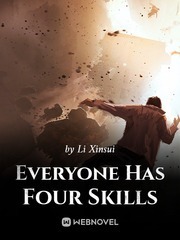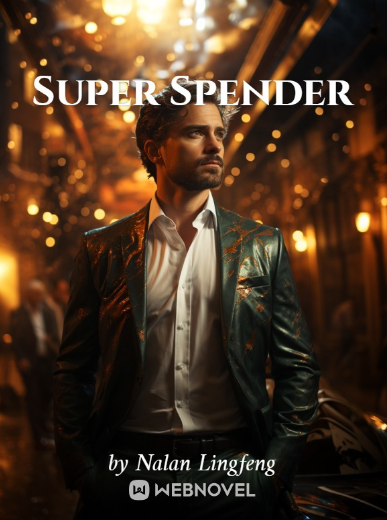Chapter 91: Super Low Temperature Alloy
Translator: EndlessFantasy Translation Editor: EndlessFantasy Translation
Tang Rui made a bold proposal.
He went straight to the point, requesting access to all the technology related to the Su-47 Golden Eagle.
Perhaps this is already common knowledge to most of you.
The Su-47 is a fighter jet that failed its validation tests and never entered active service.
Its defining issues revolved around its groundbreaking forward-swept wing design, which presented two seemingly insurmountable challenges – wingtip flutter and aerodynamic divergence.
These two problems remain unsolved mysteries in current scientific and technological realms.
Even though the forward-swept wing design offers numerous advantages, its viability is rendered moot in the face of these two unresolved problems.
At supersonic speeds, it’s highly prone to structural failure – a well-known fact.
However, many may not be aware of the Su-47 Golden Eagle’s development background.
This futuristic-looking fighter aircraft was, in fact, Russia’s very first foray into fifth-generation fighter development.
That’s right.
When the Su-47 was initially conceived, it was intended as a rival to fifth-generation fighters like the F-22.
The Su-57, or any other subsequent models, were developments that came later.
While it’s true that the Su-47 is currently not deployable, it’s worth noting that once those two aforementioned problems are resolved, the Su-47’s combat capabilities would be significantly enhanced.
In essence, this fighter aircraft holds substantial research value.
H
It’s impossible. The Su-47 is not for sale, let alone its complete technology package,” Andrei vehemently responded.
“Not for sale?” Weren’t we just discussing how Russia wanted to offload the Su-47 earlier, but no one was interested?
Ying Sauce had no use for it, having their own X-29 forward-swept wing testbed.
Why would other countries, unable to even produce fourth-generation fighters, want to buy the Su-47 when it can’t even be deployed?
Reverse engineering wouldn’t work, and it can’t be put into active service.
So, what’s the point of buying it and keeping it around?
As for why they, the Ying Sauce, didn’t buy it, well, there were rumors that they had developed their own forward-swept wing testbed.
In any case, so far, these forward-swept wing fighter jets hadn’t proven to be particularly useful.
“In that case, 1 apologize, but our company truly doesn’t require the technology you mentioned. The reason I made this request is primarily because our company is planning to develop a forward-swept wing aircraft and we need some reference materials. Since your side is unwilling to agree, let’s drop it. 1 hope we can collaborate on something else in the future,” Tang Rui nonchalantly replied.
He didn’t let it bother him. If they weren’t interested, so be it.
“Wait a moment… acquiring the entire technology package is out of the question, as it contains many of our cutting-edge technologies. However, we can sell you one Su-47 Golden Eagle as a reference,” Andrei interjected, stopping Tang Rui as he was about to leave.
Selling a full technology package and selling a finished product were two different propositions. Owning the finished product didn’t guarantee a hundred percent successful reverse engineering.
If only it were that straightforward.
“How much for one Su-47?” Tang Rui’s interest was piqued. After all, buying this aircraft, disassembling it, and upgrading it with his systems could transform it into a top-tier fifth-generation fighter.
A fifth-generation fighter – the temptation was becoming irresistible.
“Well… we need to discuss that.”
“Very well, take your time,” Tang Rui said, untroubled, willing to let them mull it over.
However, discussions continued well into the evening meal.
An agreement was still elusive.
Tang Rui had no choice but to join them for dinner.
He abstained from alcohol. With his low alcohol tolerance, drinking with Russians would be akin to courting trouble.
By the end of the meal, the Russian contingent was well into their cups, and the negotiation would have to continue the next day.
Tang Rui found this exasperating.
The only silver lining was that Russia had already agreed to swap the Su-47 Golden Eagle for firefighting drones. However, the quantity to be exchanged was still up for debate.
The following day, Tang Rui returned to the conference center.
The Russians had already finalized their discussions and presented the official contract.
The Su-47 Golden Eagle was priced at a staggering 200 million US dollars.
A substantial sum.
With a little extra, he could have bought an F-22.
But he didn’t need to spend money. Instead, he had to provide Russia with 40 sets of vehicle platforms and 120 sets of firefighting drones.
Each set comprised 36 drones.
In total, he had to supply 40 vehicles and 5760 firefighting drones.
The cost was approximately 11 million.
If you looked at it purely from a cost perspective, Tang Rui was making a significant profit.
However, both parties were benefiting from this deal.
Tang Rui essentially purchased a Su-47 Golden Eagle for 11 million.
Russia, on the other hand, swapped an inoperative fighter for a host of cruise missiles.
A plethora of cruise missiles, enough to wreak havoc on Belarus’s multinational mercenaries.
In essence, it was a mutually beneficial deal.
Both parties signed the contract and shook hands happily, then returned to their respective companies.
Once back at his company, Tang Rui promptly arranged the order. All firefighting drones were outsourced. Only the production of vehicle platforms was organized in-house.
The remainder of the company didn’t need to manufacture firefighting drones.
There were simply too many of them, and their production posed no risk of technology leakage.
After the arrangements were set, Tang Rui continued to oversee the development of his off-road camper.
“Boss, should we also modify the hydraulic system?” an employee inquired.
“Absolutely, it must be modified. What if the hydraulic fluid freezes?” Tang Rui responded.
“But boss, this hydraulic fluid can withstand temperatures as low as minus 60 degrees,” the employee pointed out.
“Even if it can withstand minus 100 degrees, that’s not enough. What if the external temperature drops to minus 120 degrees?” Tang Rui insisted.
The employee listened but remained silent, privately musing over where on Earth temperatures could plummet to minus 120 degrees. Even in Antarctica, it wasn’t that cold. Toiling over such modifications seemed utterly pointless.
Nonetheless, the boss had the final say.
If the boss wanted it modified, then it had to be done.
Tang Rui paid no heed to what his employees thought; he was focused solely on pursuing his own objectives.
Ever since conducting business with Belarus, he had discovered that his horizons had expanded.
Previously, he tinkered with minor projects.
Now, even though he continued to work on these smaller endeavors, his goals had grown loftier.
Consider his off-road camper, for instance.
Why not modify the hydraulics?
To prevent freezing.
He wasn’t preparing for Antarctica or the Arctic, but for outer space.
His ambitions had become grander.
Who said campers couldn’t venture into space?
Sooner or later, he would pilot his camper to the moon or Mars.
But that was a distant, overarching objective.
For now, his smaller goal was to transform the camper into a fortress for apocalyptic scenarios.
“You should check with the materials testing laboratory why they haven’t produced the low-temperature steel 1 need yet,” Tang Rui said, glancing at the materials he lacked. He furrowed his brows, addressing the employee beside him.
Of course, boss, 1’11 head over and push them on it.”
In less than two minutes, the employee returned.
“Boss, you should take a look. Those two researchers seem to have developed a new type of alloy.”
A new type of alloy?
Tang Rui had requested austenitic low-temperature steel, yet the researchers seemed to have ventured into the realm of materials science.
Tang Rui wiped his hands and left the workshop.
There, he found the two researchers engrossed in a piece of equipment, shouting excitedly.
“What’s happening here?” he asked, perplexed.
“Boss, we’ve developed a novel low-temperature alloy,” one of the researchers replied enthusiastically.
“Well, how does it perform?” Tang Rui asked, his excitement remaining tempered; after all, it was a low-temperature alloy, not especially useful for aircraft.
If it had been a high-temperature alloy, he might have been more enthusiastic.
“We haven’t completed all the tests yet, but based on our preliminary results, its tensile strength is three times that of austenitic low-temperature steel,” one of the researchers explained.
H
Not bad, that’s promising,” Tang Rui responded, nodding with measured enthusiasm.
“Boss, I mean it’s three times, not thirty percent.”
“I understand, 1 heard you correctly,” Tang Rui clarified.
The researchers were somewhat exasperated.
It was like talking to a brick wall.
The boss simply couldn’t grasp the significance of a low-temperature alloy with three times the tensile strength of standard steel.
“Boss, this alloy is exceptionally lightweight,” one of the researchers added, hoping to pique Tang Rui’s interest.
Exceptionally lightweight?
Tang Rui’s ears perked up at the keyword..






